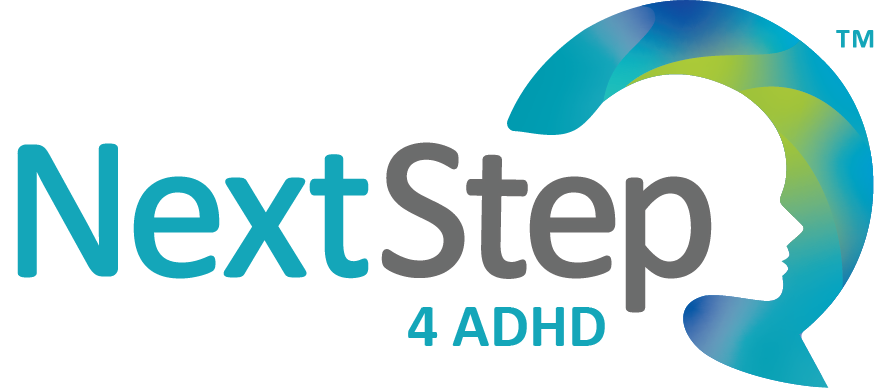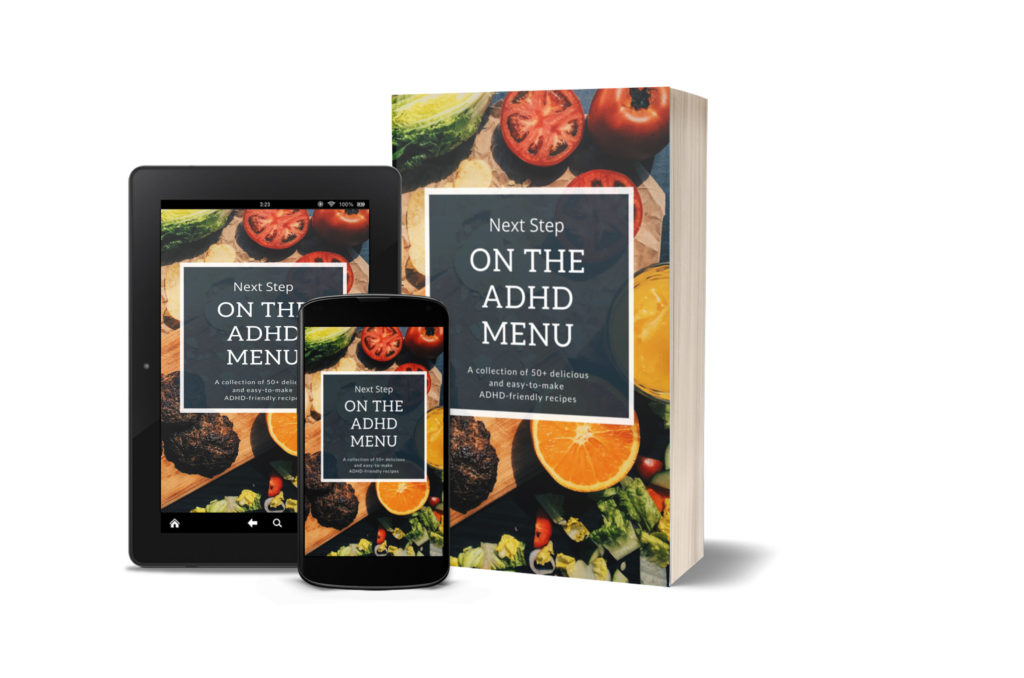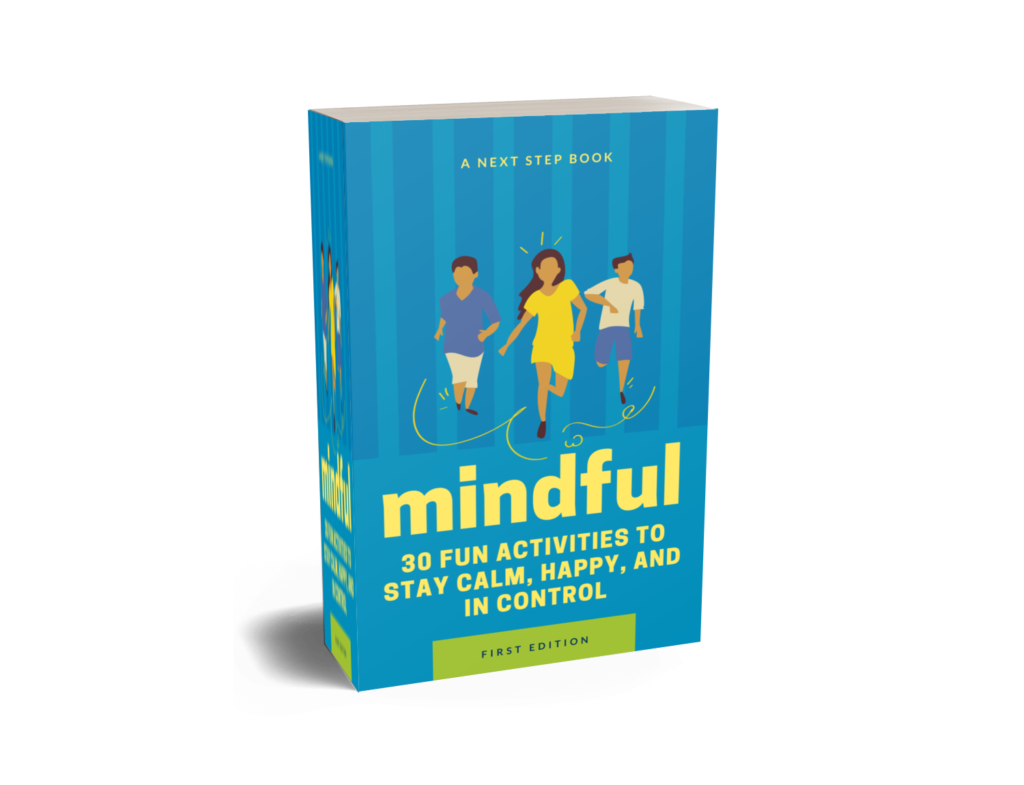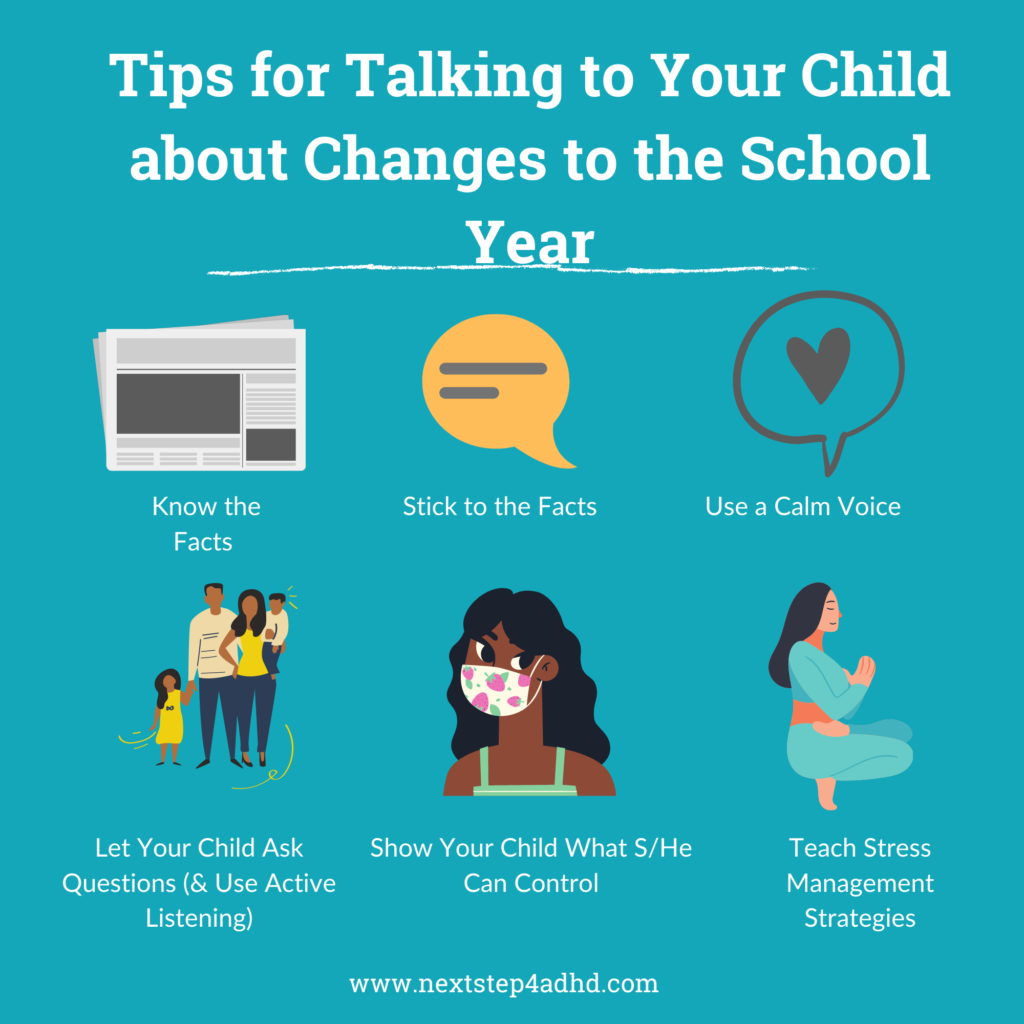Hi there! Thank you for taking the time to visit our site. We know that this is a stressful, anxiety-inducing time for adults and children alike, and that’s why we’ve created a variety of resources to help you on your parenting journey during the current pandemic. From free webinars to e-books and printable schedules, we hope that our resources empower you to take the next step forward with confidence.
Resources for Parents
Take a peek at these educational resources created by the Next Step team. Below are a variety of videos and webinars designed to help you reduce stress in your child’s life, create a successful learning-at-home environment, and support your child’s mental health.
Printable Resources and Books
Our two e-books are featured below: a recipe book and a printable workbook for kids.
Webinars and Video Courses
1. Establishing a Homeschool Schedule for Your ADHD Child
This video was recorded during stay-at-home guidelines. While the points covered can be applied at anytime, many details relate to the current environment. Whether you are choosing to homeschool or to participate in e-learning, you can adapt many of these strategies to your at-home learning situation. Children need structure, especially children with ADHD. Make life easier for you both – create a schedule for home school activities – and remove uncertainty and anxiety from your day.
Don’t forget to grab your free homeschool schedule template pack here.
2. Motivating Your Child to Work Independently is Tough: Here are Strategies that Work
In this free ADHD resource, Next Step therapist Monica Clark and educational professional Kathryn Trudeau discuss strategies and tips for motivating your child to be independent.
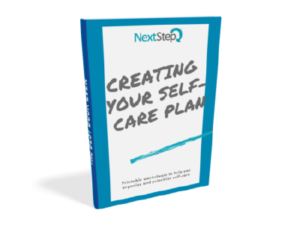 Included with this video is a printable self-care packet. You can download your self-care packet here.
Included with this video is a printable self-care packet. You can download your self-care packet here.
Tips for Talking to Your Child about the Pandemic and Current Events
Stress can take a toll on your mental and physical health, but stress is tricky. It doesn’t always manifest in the same way. Some kids may become snippy when they’re stressed while others might withdraw. Regardless of how stress impacts your child, it’s important to help your children reduce those stress levels.
How do I talk about the pandemic and the upcoming school year?
It’s important to talk to children so that they feel informed. Sometimes not knowing what is going on can be a source of stress. However, it’s important to make sure that the information you share with your children is age-appropriate. Keep the following tips in mind:
⇒Know the facts. Get the facts from trusted resources.
⇒Let your kids know that you’re there to answer any questions they may have. Maybe say, “What questions do you have?” and don’t offer more detail that your child is interested in.
⇒Stick to the facts and speak in a calm and reassuring voice. Even if you’re anxious or worried, your calmness is a source of comfort for your children.
⇒Talk to your kids about things they can do to feel more in control like washing their hands. Let them know that everyone deals with hard times and that stress is normal.
Stressful times don’t last forever and when you come out on the other side, you’re stronger and more resilient than before.
How can I help reduce stress levels in my children?
Kids pick up on their parent’s stress. So if a parent is stressed out and worried, the child is more likely to feel stressed and worried. Sometimes the best way to manage a child’s stress is if the parent manages their own.
You can do this in many ways, including:
⇒Ask the child what he/she is feeling and create opportunities for him or her to express emotions. Don’t offer advice but just listen.
⇒Try your best to establish routines. Routines help us feel grounded and centered and safe. You can try to keep routines as close to his/her routines before COVID-19 or you can create a new family routine to help everyone in the family regain a new sense of normal.
⇒Back to basics. Make sure that your child is getting enough sleep and physical activity and is eating healthy foods.
⇒Spend one on one time with your child. Let him/her pick the activity. Don’t use this time for teaching or correcting and try to overlook minor misbehavior. This is a time for connecting with your child and strengthening your relationship.
⇒Limit their exposure to the news and media.
Q&A with Dr. Kristi Briscoe, Regarding Homeschooling and ADHD
 If you’re considering homeschool or virtual learning through your school, we know you have many questions, and that’s okay. We’ve rounded up some of your top questions and interviewed Dr. Kristi Briscoe, a board-certified pediatrician who specialized in ADHD.
If you’re considering homeschool or virtual learning through your school, we know you have many questions, and that’s okay. We’ve rounded up some of your top questions and interviewed Dr. Kristi Briscoe, a board-certified pediatrician who specialized in ADHD.
Q: Can I really homeschool my child if I have ADHD? I’m afraid of failing.
Q: I know the benefits of homeschooling, but I feel overwhelmed right now. What can help me?
Luckily, most schools are offering a virtual option that is going to be much more structured and individualized than NTI was in the spring. Whether you choose homeschooling and developing your own differentiated and level-appropriate curriculum or instead choose to rely on your school district to educate your child virtually, there are several factors that will improve your (and you child’s) chances for success. Routines and schedules. Consistency.
Q: I want to be prepared. What obstacles of ADHD will affect my ability to teach and how can I overcome them?
Several ADHD characteristics will pose a challenge for homeschooling. Most children are not used to being educated in the home environment. Most are instead used to playing and having unstructured time and freedom in the home environment. So making the transition to an unstructured play zone with minimal rules and expectations to a structured learning environment can be tricky.
Developing a schedule and routines with your child that fit with their capabilities will be beneficial to help overcome some of the ADHD obstacles.
Using timers, schedules, routines and consistency to overcome procrastination from the very first day will be helpful in starting the school year strong.
Setting realistic expectations and then building your child’s sense of success and capability will also be helpful. Also, staying focused on your child’s effort will be key to painting and or improving their motivation and willingness to stick with the plan.
Problem solving is a key skill that is important to develop with any child, but especially ADHD children, so developing a regular routine to look back on the week’s challenges and successes and make needed changes for future weeks may prove beneficial in most families. Allowing your child/children to engage in problem solving and come up with ideas that they think will work better is a valuable learning process for them.
Q: My child keeps fidgeting while I’m trying to teach? Does that mean he’s not listening?
Fidgeting alone does not mean your child is not listening. Many kids fidget while listening and need to move while listening. There are fidgets available that can somewhat contain fidgeting. The more pressing concern is whether your child is actually listening and/or processing what they are hearing. The best way to make sure that your child is hearing and processing/understanding what is being taught/said/instructed is to regularly ask questions about what is said.
For example, if directions are given for a worksheet or project, then before your child sits alone to complete the assignment, simply ask them to explain what they need to do before beginning. If your child is not able to answer you correctly, then it might be appropriate to discuss your concerns with your child’s doctor.
Q: What are the benefits of homeschooling a child with ADHD?
Homeschooling does permit more flexibility in schedule and more individualized structure than a typical school environment. The tricky part is that most children with ADHD tend to thrive with structure and routines, which school provides. Implementing as much structure and routine as possible into a homeschool plan will be absolutely necessary for many ADHD kids to be successful in a homeschool environment. Knowing your child and knowing when and how they work best and allowing some flexibility but sticking to as much consistent routine as possible will likely yield the most success this school year.
Q: Should I still give my child medication even if we’re not in traditional school?
ADHD medication is typically needed for children with ADHD to be able to listen, learn, focus and complete tasks most effectively, regardless of whether they are learning at home or at school. Most children with ADHD often do better in a 1-on-1 environment in terms of being less off-task and less distractible. This often leads many parents to wonder if their child’s medication is needed at all. Children are different and ADHD is a spectrum and there may be some children who will be able to be successful and learn and stay on task effectively without medication.
It can, however, be very frustrating for a child to have to re-read a book or lose an hour daydreaming or looking out a window at the birds. So it is very important that you know your child and know whether they do best and feel best when they take their medication. I will always instruct parents that my primary goal when making a medication recommendation is the child’s internal feeling’s of success. If your child is frustrated at home or getting yelled at for not doing their work, then they are most likely not feeling maximally successful. Medication often gives children their best chance to feel good about their abilities and feel successful and this can impact their self-esteem and beliefs about themselves.
Q: My child’s handwriting isn’t great. Is that a sign of ADHD? Can I help him get better with this?
Many kids with ADHD do have sloppy handwriting. Many kids with ADHD are not diagnosed or treated until after handwriting skills are taught in school. Handwriting takes practice, and practice is something that is often challenging for children with ADHD. I do think that many children can still improve their handwriting with effort (at any age). I approach handwriting like everything else related with ADHD. It is a skill that must be practiced to improve. Meeting you child where they are with their handwriting, commenting on what they are already doing well, and slowly working on improving on or correcting some of the challenging letters. Some children have strength or motor issues or true learning disorders that impact their handwriting and these separate issues can require physical therapy or occupational therapy and handwriting interventions.
Tips for Thriving in a Homeschool Environment
Some children with ADHD can thrive in a homeschool environment. Keep in mind that homeschool and e-learning refer to two different learning scenarios, but regardless of which path you take, it’s important to create an ideal homeschool environment. If this is all new to you, that’s okay. There are plenty of books, resources, and material to help you feel prepared and confident.
Other Articles and Resources
- 7 Tips for Creating a Homework Station for Your Child with ADHD + Printable Homeschool Schedules
- Top 5 Calming Apps for Children (And What to Use as an Alternative)
- Five Ways to Improve Emotional Regulation
- Strategies for Calming the Coronavirus Chaos in Your Home – Interview with NextStep Providers
- 5 Art-Based Activities to Keep Hyperactive Kids Busy
- Anxiety Is Contagious, But So Is Resiliency
- Social Distancing & Exercise: The New Normal
- Surviving Online Learning: A Guide for Parents (Plus, Homeschool Schedule Printables)
- 8 Tips to Help Your Child with ADHD Thrive with E-Learning
- 9 Parenting Tips to Survive and Maybe Even Enjoy Social Isolation With Your Children
